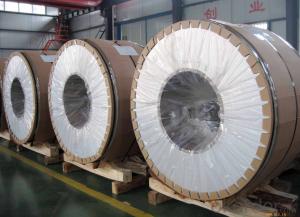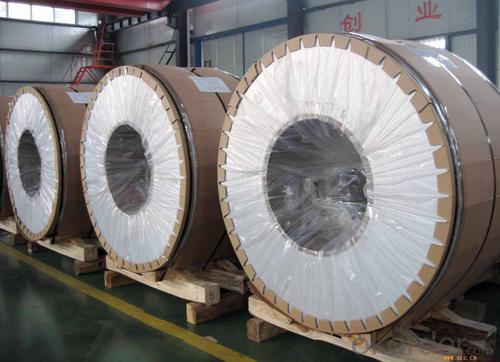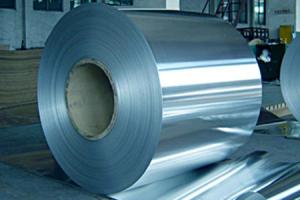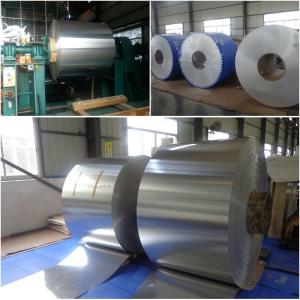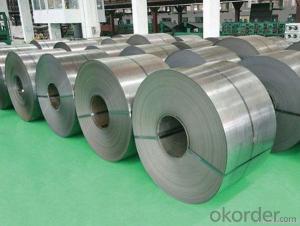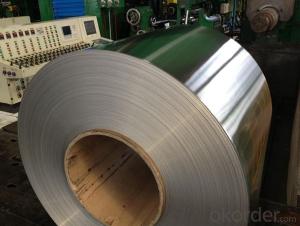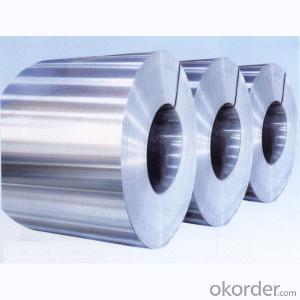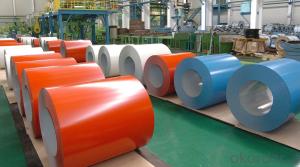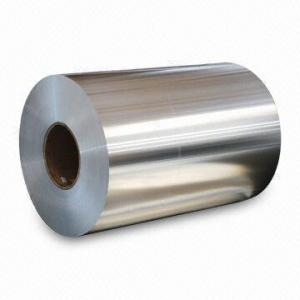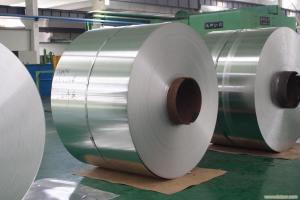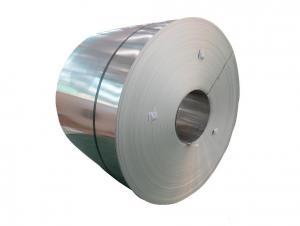Wholesale Roofing Aluminum Coil - Aluminum Mill Finished Strips 8xxx for Construction
- Loading Port:
- China main port
- Payment Terms:
- TT or LC
- Min Order Qty:
- 8 g/ft
- Supply Capability:
- 100000 g/ft/month
OKorder Service Pledge
OKorder Financial Service
You Might Also Like
1.Structure of Aluminum Mill Finished strips 8XXX Used in Construction Description
Aluminum Mill Finished strips 8XXX Used in Construction has great ductility, heat conductivity, anti-corrosion and moisture resistance properties.
Aluminum Mill Finished strips 8XXX Used in Construction is widely used for PP cap stock, hot rolled thick plate, PS base plate, aluminum curtain wall base plate, the traffic sign ,air-conditioner heat and exchangers, food container, household foil, pharmaceutical packing, cigarettes packing.
2.Main Features of Aluminum Mill Finished strips 8XXX Used in Construction
• Superior quality of raw material
• Reasonable and stable chemical composition
• Accurate tolerance
• Goode mechanical property
3.Aluminum Mill Finished strips 8XXX Used in Construction Images
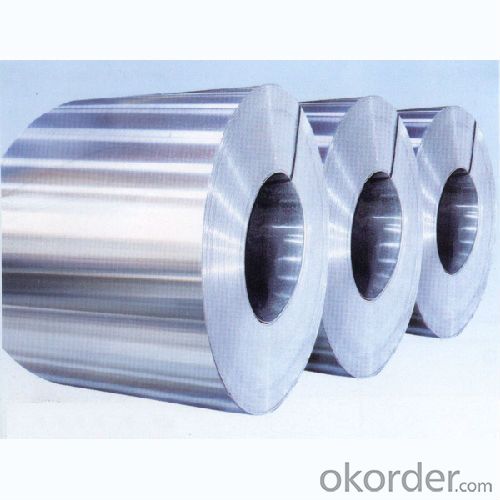
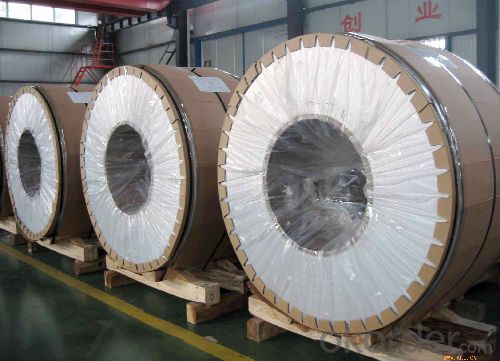

4.Aluminum Mill Finished strips 8XXX Used in Construction Specification
Alloy | AA8xxx (AA8011 etc) |
Temper | H14, H16, H18, H22, H24, H26, H32, O/F |
Thickness | 0.2mm -- 100mm |
Width | 30mm -- 1700mm |
Standard | GB/T 3880-2006,EN,ASTM,JIS |
5. FAQ of Aluminum Mill Finished strips 8XXX Used in Construction
A.How to guarantee the quality?
Customers are welcome to our mill to visit and check the products. Besides, we can arrange a third party to test Aluminum Mill Finished strips 8XXX Used in Construction.
B.When will you deliver the products?
Aluminum Mill Finished strips 8XXX Used in Construction will be delivered within 35 days after receiving advanced payment or original L/C.
- Q: What’s the difference between aluminum tile, coil and sheet? Why?
- Wood pallet is often used, which is easy to transport and can ensure the safety of products.
- Q: Can aluminum coils be painted or coated after installation?
- After installation, it is indeed possible to paint or coat aluminum coils. Aluminum, being a versatile material, lends itself well to painting or coating in order to improve its aesthetics or offer extra safeguarding. Opting to paint or coat aluminum coils subsequent to installation can effectively thwart corrosion, enhance durability, and yield a personalized finish. The selection of paint or coating hinges upon the specific necessities and desired results. Prior to applying any paint or coating, it is crucial to thoroughly clean and prepare the aluminum surface to ensure strong adhesion and long-lasting results.
- Q: How are aluminum coils joined in a continuous process?
- Various techniques, including welding, brazing, and adhesive bonding, are utilized in the continuous process of joining aluminum coils. Joining aluminum coils through welding is a widespread method. It involves melting the coil edges and subsequently merging them. This can be accomplished through different welding processes, such as TIG welding, MIG welding, or laser welding. These welding methods establish a sturdy and long-lasting bond between the coils. Brazing is an alternative technique employed for joining aluminum coils. It entails heating the coils and utilizing a filler material with a lower melting point than aluminum to create the joint. The filler material, typically a brazing alloy, is applied to the joint area. Upon heating, it liquefies and flows into the gap between the coils, creating a solid bond as it cools. Adhesive bonding is also employed during the continuous joining of aluminum coils. This approach involves applying a specialized adhesive or glue to the coil surfaces that require joining. The adhesive is chosen meticulously for its exceptional bonding properties with aluminum. The coils are then pressed together, and the adhesive undergoes curing, resulting in a robust and dependable bond. Each joining technique possesses distinct advantages and is selected based on factors such as application requirements, the aluminum type used, and the desired level of strength and durability. The choice of joining method in a continuous process relies on the specific demands of the production line and the final product.
- Q: What is the role of aluminum coils in the automotive industry?
- Aluminum coils play a significant role in the automotive industry, particularly in the manufacturing of vehicles. These coils are used in the production of various components and parts, such as radiators, condensers, and air conditioning systems. One of the main reasons aluminum coils are preferred in the automotive industry is their lightweight nature. Aluminum is significantly lighter than other metals, such as steel, making it an ideal choice for improving fuel efficiency and reducing overall vehicle weight. This not only enhances the performance of the vehicle but also reduces emissions, contributing to a more environmentally friendly transportation sector. Additionally, aluminum coils offer excellent thermal conductivity, which is crucial in automotive applications. They help dissipate heat efficiently, ensuring the proper functioning of cooling systems and preventing overheating. This is particularly important for components like radiators, where effective heat transfer is essential to maintain optimal engine temperature. Furthermore, aluminum coils are highly corrosion-resistant. They have a natural oxide layer that protects against rust and corrosion, making them more durable and long-lasting than other metals. This resistance to corrosion is vital in the automotive industry, where vehicles are exposed to various environmental factors, such as moisture, salt, and chemicals. Aluminum coils also provide design flexibility. They can be easily shaped and formed into different sizes and configurations, allowing manufacturers to create complex and customized components. This flexibility in design enables automotive companies to optimize space and maximize efficiency in their vehicles. In summary, aluminum coils have a crucial role in the automotive industry. Their lightweight nature, excellent thermal conductivity, corrosion resistance, and design flexibility make them an ideal choice for various automotive applications, contributing to improved performance, fuel efficiency, and overall durability of vehicles.
- Q: How are aluminum coils protected from damage during transportation?
- Aluminum coils are protected from damage during transportation through a combination of packaging materials and handling precautions. Firstly, the coils are typically wrapped with protective materials such as stretch film or plastic wrap to prevent scratches and abrasions. This helps to maintain the integrity of the coil surface and prevent any potential damage. In addition to the outer wrapping, the coils are often placed on sturdy wooden pallets or skids to provide a stable base for transportation. This helps to minimize any movement or shifting during transit, which could otherwise lead to dents or deformations in the coils. Furthermore, coils may be secured using steel or plastic strapping to further ensure their stability and prevent any unintended unwrapping or unrolling. These straps are tightly fastened around the coils and pallets, creating a secure bundle that can withstand the potential jostling and vibrations that occur during transportation. During loading and unloading, specialized equipment such as forklifts or cranes are used to handle the coils with care. This minimizes the risk of dropping or mishandling, which could cause significant damage to the coils. Overall, a combination of protective packaging materials, secure pallets, and careful handling procedures are employed to safeguard aluminum coils from damage during transportation. These measures aim to preserve the quality and structural integrity of the coils, ensuring that they arrive at their destination in optimal condition.
- Q: how many chloride ions are present? how many chlorine ions are present? what is the mass in grams of one formula unit of aluminum chloride?
- Aluminum Chloride is simply AlCl3 So In each mole of AlCl3 there are 1 mol of Al 3 mol of Cl We know (from periodic table), 1 mol of Al weighs 26.98 g 1 mol of Cl weighs 35.47g so 1 mol of AlCl3 weighs 26.98g + 3x35.47g = 133.39 g sooo moles of AlCl3 = 37.2 g /133.39 g/mol = 0.279 mol in one mol of anything, there are 6.02 x 10 ^ 23 of that thing... so we have 0.279 mol x 6.02 x 10 ^ 23 molecules /mole = 1.68 x 10 ^ 23 And, we know one molecule of AlCl3 dissociates into one Al ion and 3 Cl ions sooo 1.68 x 10 ^ 23 AlCl3 ions dissociate into 1.68 x 10 ^ 23 Al ions so answer is 1.68 x 10 ^ 23 Al ions
- Q: Can aluminum coils be used in corrosive gas environments?
- Corrosive gas environments can indeed accommodate the use of aluminum coils. Aluminum is widely recognized for its exceptional resistance to corrosion, particularly under atmospheric conditions. An oxide layer naturally develops on the metal's surface, acting as a safeguard against further corrosion. Nevertheless, it is crucial to acknowledge that aluminum is prone to vulnerability in the presence of specific corrosive gases, such as chloride and sulfur compounds. In such instances, it may be imperative to adopt supplementary protective measures, such as surface treatment or coating, to guarantee the durability and efficacy of the aluminum coils within corrosive gas environments.
- Q: Is it possible to use an aluminum coil as a wire in electronic devices?
- <p>While it is technically possible to use an aluminum coil as a wire for electronic equipment, it is not typically recommended. Aluminum has a higher resistivity than copper, which is the standard material for electrical wiring due to its lower resistivity and higher conductivity. This means aluminum wire may not conduct electricity as efficiently, leading to increased energy loss and potential overheating. Additionally, aluminum can oxidize, which may further degrade its conductivity over time. For most electronic equipment, copper wire is preferred for its superior electrical properties and reliability.</p>
- Q: Is it possible to utilize an electric iron that features an aluminum coil heater?
- <p>Yes, you can use an electric iron with an aluminum coil heater. Aluminum coil heaters are commonly used in electric irons due to their excellent heat conductivity and quick heat-up time. They distribute heat evenly and maintain a consistent temperature, making them ideal for ironing. However, it's important to follow the manufacturer's guidelines for use and maintenance to ensure safety and longevity of the iron.</p>
- Q: This question asks about the impact of aluminum coils on the quality of welding. It seeks to understand the relationship between the material properties of aluminum coils and the outcomes of the welding process.
- <p>Aluminum coils can significantly affect welding quality due to their unique properties. Aluminum has a high thermal conductivity, which requires more energy to weld, and can lead to rapid heat dissipation, affecting the weld's uniformity. Oxides on the aluminum surface can also interfere with the welding process, causing porosity and poor joint strength if not properly cleaned. Additionally, aluminum's low melting point can lead to distortion and warping if not managed correctly. The use of appropriate filler materials, proper cleaning, and precise control of welding parameters are crucial to achieve high-quality welds with aluminum coils.</p>
Send your message to us
Wholesale Roofing Aluminum Coil - Aluminum Mill Finished Strips 8xxx for Construction
- Loading Port:
- China main port
- Payment Terms:
- TT or LC
- Min Order Qty:
- 8 g/ft
- Supply Capability:
- 100000 g/ft/month
OKorder Service Pledge
OKorder Financial Service
Similar products
Hot products
Hot Searches
Related keywords
